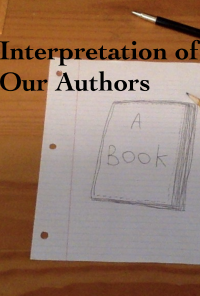Interpreting Hemingway
What I find the most interesting about Ernest Hemingway’s writing is the way in which he writes dialogue. Any work of literature, the fine rules will tell you, should involve complex and comprehensive dialogue. I can recall from nearly every single English literature class I have ever taken such statements as: “never leave a line of spoken dialogue unexplained, and, by gosh, don’t just say, ‘so and so said,’ because there are more words that exist to signify that and how someone has spoken than simply using ‘said.’” Apparently, it would seem that Hemingway did not attend my English classes.
But this makes perfect sense, as Hemingway was not the wealthiest or most privileged of individuals, to say the least. He would not have learned much of the connectors of spoken dialogue in writing, and whether that is the cause of it or not, the word “said” constitutes much of his use of signal words following lines of dialogue. The essence of his stories seem more natural, almost, albeit rapidly progressing and sometimes mundane.
Personally, when I write, I very much try to avoid the word “said” after a line of dialogue. I will use “exclaimed,” “stated,” “affirmed,” “asserted,” “asked,” “inquired,” “questioned,” “reasoned,” “moaned,” “screamed,” “shouted,” “yelled,” “hollered,” “laughed,” “smiled,” “pleaded,” “begged…” But by gosh, I will avoid the word “said” like it is the plague. “Ah, I used the word ‘said’ here, what an unfortunate word choice.” Hemingway, however, either proves to us that it is not such a vulgar word after all, or that he is clever enough to avoid the criticizing eyes of publishers when he uses it.
No, however quaint it may seem, I do not think that Hemingway possesses a keen wisdom for dialogue. He simply writes in a way that no other writer could ever dare to bring themselves to. Descriptive dialogue connectors: “terminate them!” Excessive detail: “toss it out the window!” Cannon-fodder statements: “off with their heads!” And in many other ways, Hemingway has created his writing platform (one which, in the eyes of the traditional forms of literature, should be riddled with holes and crevices, ready to topple over at the slightest gust of wind).
And yet, it is because of this that Hemingway is such a profound author. He was one of the only ones of his time (as, people will do similar things in their own times, past and future) to neglect the “rules” of literature, and to travel where no one had been in a very long time, if there were tracks in the sand already at all. As if his writing journey were on a zeppelin sinking from the sky, he tossed “unnecessary” filler paragraphs from the vessel as if it may spare him the excessive weight of this misfortune, and avoid the unforgiving crash to the ground.
I have learned a lot from Hemingway’s use of detailing imagery alone. This is because he uses almost none of it, and what little bit he does use you better pay attention to, because it’s most likely a carrier of some hidden importance. When I write, at least as of a few years ago, I should seek to describe everything from the color of the ceiling of a room to the exact size and color of every single book on an bookshelf that has no significance to the story at all. After reading “A Farewell to Arms,” however, this largely changed.
“A Farewell to Arms” is, in my opinion, the single greatest book ever composed by Earnest Hemingway, and a profound work of literature on its own (to this day, it is the only book which has made me feel so much as a tinge of sadness, and I’ve read “The Jungle” and “The Awakening”). But how was this work so magnificent, despite the fact that there was not much imagery, or well-structured dialogue (at least compared to what I was used to reading and writing)?
Hemingway shows us, it would seem, that “good writers” do not need to conform to the traditional structures of plot and prose. I will admit, it is easy to get lost when reading Hemingway, and I always have to backtrack a few times whenever I read one of his works in moments of lengthy conversation between characters, but his writing style simply has something special to it that is not present in those of Fitzgerald, Tolstoy, or Chopin.
So the final question: if someone else had smashed the walls of traditional literature before Hemingway had, would they have been more prominent than the now-respected author? Honestly, I cannot say whether or not that would have been the case. However, I do believe that there is something about Hemingway that is special to himself and on its own. Perhaps it is because he is so intentional: if something is mentioned in his books, it likely has a deeper meaning than it seems to project. I truly do believe that, in one file, there is breaking the rules of literature in the 1920s, and then, in a separate category, there is Hemingway.
Even his resting place seems to break traditions. He is buried in a quiet cemetery in Idaho, and there are always half-empty bottles of wine and beer about his tombstone, left by those paying their respects to him. It would almost appear, as with his writing, that Hemingway had his whole life embraced something which many generally despised...Hemingway is easily my favorite author of the 1920s.
